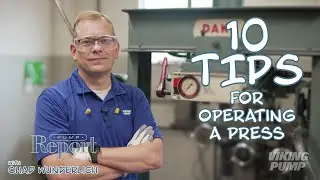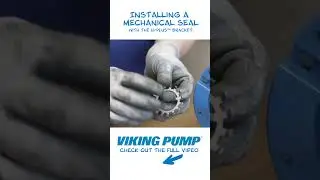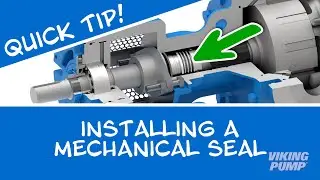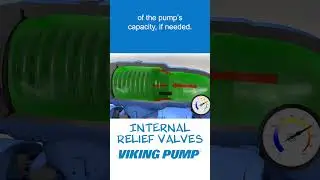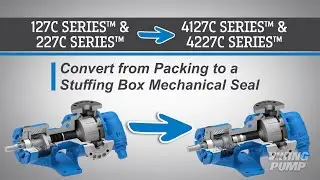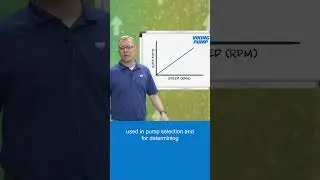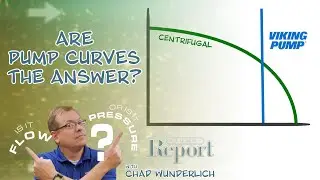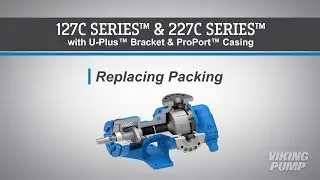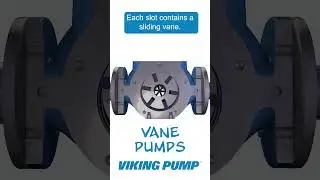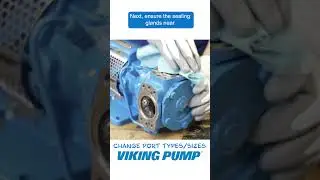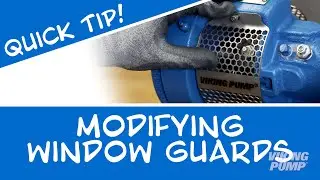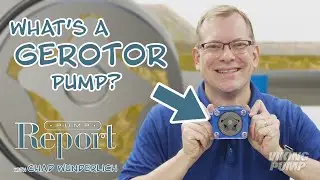Learn the Basics of Electric Motors and How They Apply to Pumps
Have questions? We'd love to chat! Send us a message here: https://www.vikingpump.com/yt
In this Pump Report, Chad walks through the basics of electric motors and how the related to positive displacement pumps. To learn more, visit our website at vikingpump.com
#VikingPump #motors #electricmotors
▬ More Videos ▬▬▬▬▬▬▬▬▬▬▬▬
► All Viking Pump Videos: / vikingpumpinc
► Subscribe to Viking Pump Channel: https://bit.ly/2KJGmJT
▬ Social Media ▬▬▬▬▬▬▬▬▬▬▬▬▬▬▬
► Facebook: / vikingpump
► LinkedIn: / viking-pump
► Website: http://www.vikingpump.com
Rotary pumps require a rotating power source to drive them. This could be a gas engine, hydraulic motor, or even a hand crank, but the vast majority utilize motors…specifically AC induction motors.
Now to be clear, Viking Pump is NOT a motor manufacturer. So we'll only be covering basic motor concepts and how they relate to pump operation.
Horsepower is a measurement of the rate at which work gets done, or power.
The term “horsepower” is literally an approximation of the power of a draft horse. This value was used to compare the delivered power of steam engines, and later, electric motors, to that of horses. Scottish engineer James Watt determined that a draft horse could roughly lift a 1000 lb weight 33 feet in one minute. The SI unit of power, the Watt, is named after him.
A common example of this concept is a wrench turning a bolt. A force applied at the end of the wrench exerts a twisting force or torque on the bolt that is equivalent to the product of the force and the distance. Common units of measure are pound feet or Newton meters.
Motor speed is the rotational speed of the motor shaft measured in revolutions per minute, or RPM. Motor speed is determined by the number of poles and electrical frequency, concepts we’ll discuss shortly. Speed, torque, and horsepower are related by this equation:
Viking pump maximum speed ratings are based on these common 60 Hertz motor speeds which is why many of our pump curves end at a maximum speed of 1800 or 1200 RPM.
Frequency is a measure of cycles of alternating electrical current, or AC power. It’s measured in units of Hertz which is a measurement of cycles per second.
AC frequency varies from country to country. North America, most of South America, and a handful of other countries use 60 Hertz AC power. The remainder of countries use 50 Hertz AC power. Since this frequency is 17% lower, motors will run 17% slower than their counterparts in 60 Hertz regions.
Another key factor in determining motor speed is the number of magnetic poles utilized in the design of the motor. These poles must come pairs so the number of poles will only be an even number - such as 2, 4, 6, 8, and so on.
Two-pole motors run the fastest. Doubling that to a 4-pole motor cuts that speed in half. An 8-pole motor would run half the speed of a 4-pole motor, and so on. Adding poles decreases the speed, increases the torque rating, and improves the starting characteristics. The downside? Motors with more poles are physically larger and typically more expensive. For Viking Pump units, 4-pole and 6-pole motors tend to be most common.
Here we see the difference between these two systems. With single phase, a single current source provides all of the available power. In a 3-phase system, 3 current sources supply power 120 degrees out of phase with each other. AC motors are designed and nameplated to be used with only one of these systems so it’s important to specify and select the correct motor based on the power supplied.
Single phase motors tend to be small motors and are common for applications of 3 horsepower and below. Due to the location it may be the only power source available.
Three phase motors are not limited and can be small or hundreds of horsepower. They draw less current and are more efficient than their single-phase counterparts. For these reasons, 3 phase motors are more commonly supplied with Viking pumps.
NEMA is the most common standard in North America. Common NEMA motor frame sizes for Viking Pump are shown here. They are available with or without a “C” face mount. “C” face frames allow for the mounting of equipment directly to the motor. This could be a c-face mounted gear reducer or pump. To designate a c-face, the letter “c” is added to the end of the frame number. These frames come standard with a foot for mounting the motor to the baseplate.
First the junction box is located on top of the motor as standard instead of the NEMA side mount. Second, the frame number is only part of the designation. A motor mounting code is also needed to specify whether the motor has a foot and the type of mounting face. Lastly, there are 2 different standards for flanged faces, a larger B5 or a smaller B14. This is also important to check to make sure that motor mounted equipment like reducers and pumps will fit it.










